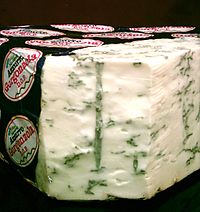2-Heptanone

| |

| |
| Names | |
|---|---|
| IUPAC name
Heptan-2-one
| |
| Other names
Amyl methyl ketone
Butyl acetone Methyl n-amyl ketone Methyl pentyl ketone | |
| Identifiers | |
3D model (JSmol)
|
|
| ChEBI | |
| ChEMBL | |
| ChemSpider | |
| ECHA InfoCard | 100.003.426 |
| KEGG | |
PubChem CID
|
|
| UNII | |
CompTox Dashboard (EPA)
|
|
| |
| |
| Properties | |
| C7H14O | |
| Molar mass | 114.18 g/mol |
| Appearance | Clear liquid |
| Odor | banana-like, fruity[2] |
| Density | 0.8 g/mL |
| Melting point | −35.5 °C (−31.9 °F; 237.7 K) |
| Boiling point | 151 °C (304 °F; 424 K) |
| 0.4% by wt | |
| Vapor pressure | 3 mmHg (20°C)[2] |
| -80.50·10−6 cm3/mol | |
| Hazards | |
| Flash point | 39 °C (102 °F; 312 K) |
| 393 °C (739 °F; 666 K) | |
| Explosive limits | 1.1% at 151 °F (66 °C) - 7.9% at 250 °F (121 °C)[2] |
| Lethal dose or concentration (LD, LC): | |
LD50 (median dose)
|
1670 mg/kg (rat, oral) 750 mg/kg (mouse, oral)[3] |
LCLo (lowest published)
|
4000 ppm (rat, 4 hr) 2000 ppm (guinea pig, 14.8 hr)[3] |
| NIOSH (US health exposure limits): | |
PEL (Permissible)
|
TWA 100 ppm (465 mg/m3)[2] |
REL (Recommended)
|
TWA 100 ppm (465 mg/m3)[2] |
IDLH (Immediate danger)
|
800 ppm[2] |
Except where otherwise noted, data are given for materials in their standard state (at 25 °C [77 °F], 100 kPa).
| |
2-Heptanone, also known as methyl n-amyl ketone, or Heptan-2-one, is a ketone with the molecular formula C7H14O. It is a colorless, water-like liquid with a banana-like, fruity odor.

2-Heptanone is listed by the FDA as a "food additive permitted for direct addition to food for human consumption" (21 CFR 172.515), and it occurs naturally in certain foods (e.g., beer, white bread, butter, various cheeses and potato chips).[4]
The mechanism of action of 2-heptanone as a pheromone at odorant receptors in rodents has been investigated.[5][6][7]
2-Heptanone has also been found to be excreted by honey bees when they bite small pests within the colony such as wax moth larvae and Varroa mites. Though it was historically believed to be an alarm pheromone, 2-heptanone has been shown to act as an anaesthetic on the pests, enabling the honey bee to stun the pest and eject it from the hive. The work could lead to the use of 2-heptanone as an alternative local anaesthetic to lidocaine, which although well established for clinical use, has the disadvantage of provoking allergic reactions in some people.[8]
2-Heptanone was one of the metabolites of n-heptane found in the urine of employees exposed to heptane in shoe and tire factories.[9]
References
- ^ Methyl n-amyl ketone, International Occupational Safety and Health Information Centre (CIS)
- ^ a b c d e f NIOSH Pocket Guide to Chemical Hazards. "#0399". National Institute for Occupational Safety and Health (NIOSH).
- ^ a b "Methyl (n-amyl) ketone". Immediately Dangerous to Life or Health Concentrations (IDLH). National Institute for Occupational Safety and Health (NIOSH).
- ^ Methyl (n-amyl) ketone, Chemical Sampling Information, Occupational Safety & Health Administration
- ^ Wang, Z.; Balet Sindreu, C.; Li, V.; Nudelman, A.; Chan, G.C.; Storm, D.R. (2006). "Pheromonal detection in male mice depends on signaling through the type 3 adenylyl cyclase in the main olfactory epithelium". J. Neurosci. 26 (28): 7375–7379. doi:10.1523/JNEUROSCI.1967-06.2006. PMID 16837584.
{{cite journal}}: Unknown parameter|last-author-amp=ignored (|name-list-style=suggested) (help) - ^ Hauser R, Marczak M, Karaszewski B, Wiergowski M, Kaliszan M, Penkowski M, Kernbach-Wighton G, Jankowski Z, Namieśnik J (2008). "A preliminary study for identifying olfactory markers of fear in the rat". Lab Animal. 37 (2): 76–80. doi:10.1038/laban0208-76. PMID 18216798.
- ^ Gutiérrez-García AG, Contreras CM, Mendoza-López MR, García-Barradas O, Cruz-Sánchez JS (2007). "Urine from stressed rats increases immobility in receptor rats forced to swim: role of 2-heptanone". Physiol. Behav. 91 (1): 166–172. doi:10.1016/j.physbeh.2007.02.006. PMID 17408705.
- ^ "Honey-bees found to have bite that stuns". BBC News. 26 October 2012. Retrieved Jan 8, 2013.
- ^ Perbellini, L.; Brugnone, F.; Cocheo, V.; De Rosa, E.; Bartolucci, G.B. (1986). "Identification of the n-heptane metabolites in rat and human urine". Arch. Toxicol. 58 (4): 229–234. doi:10.1007/BF00297111. PMID 3718225.
{{cite journal}}: Unknown parameter|last-author-amp=ignored (|name-list-style=suggested) (help)
External links
- MSDS for 2-heptanone
- Methyl (n-amyl) ketone, NIOSH Pocket Guide to Chemical Hazards
